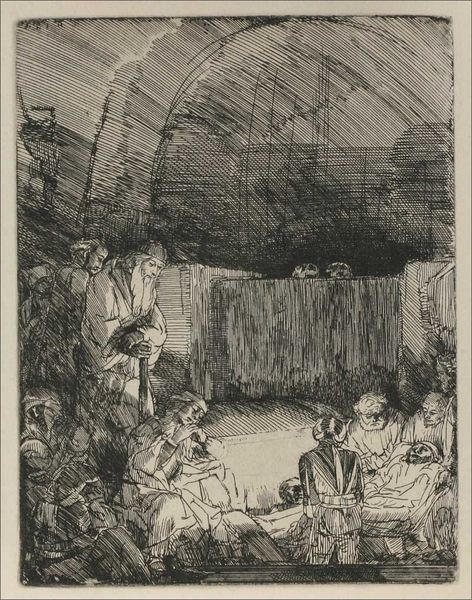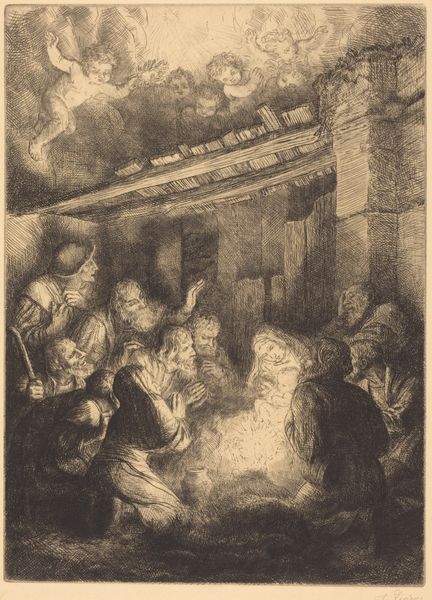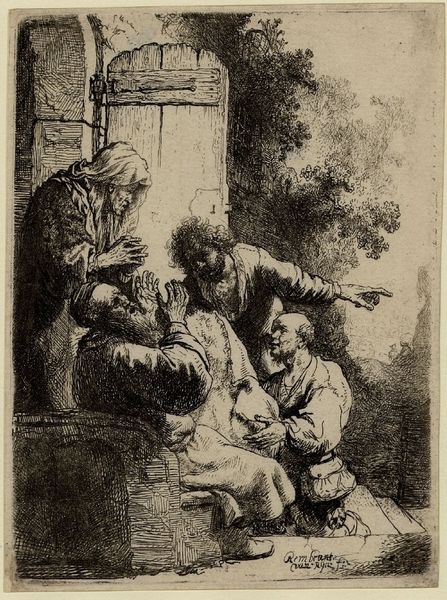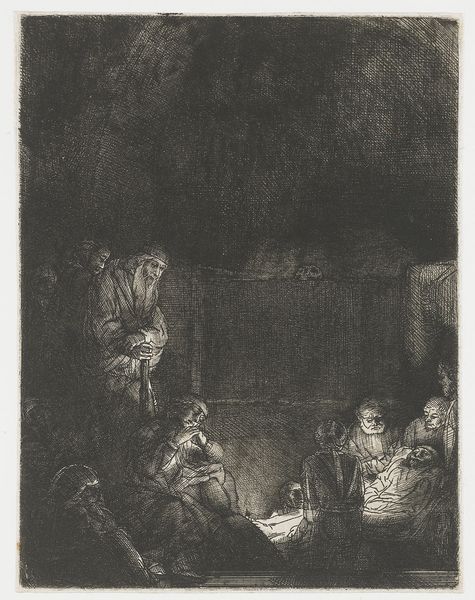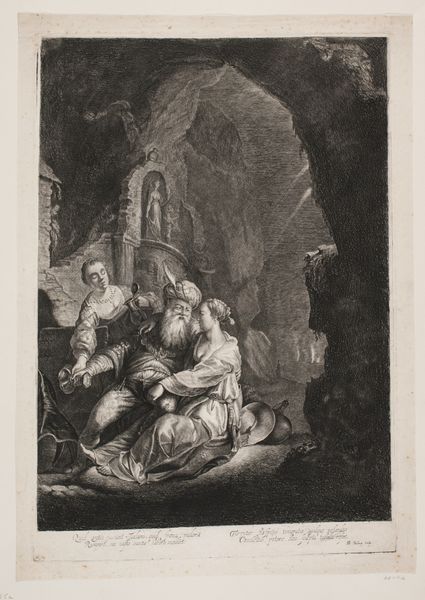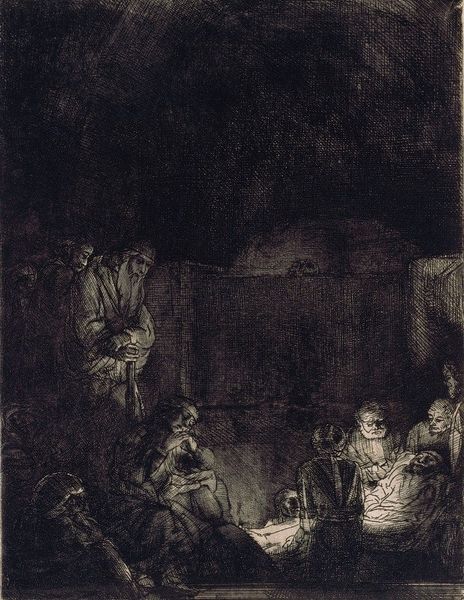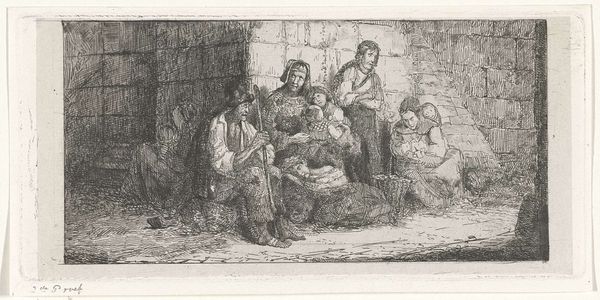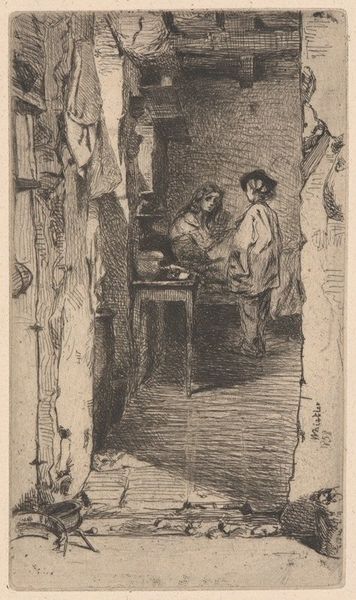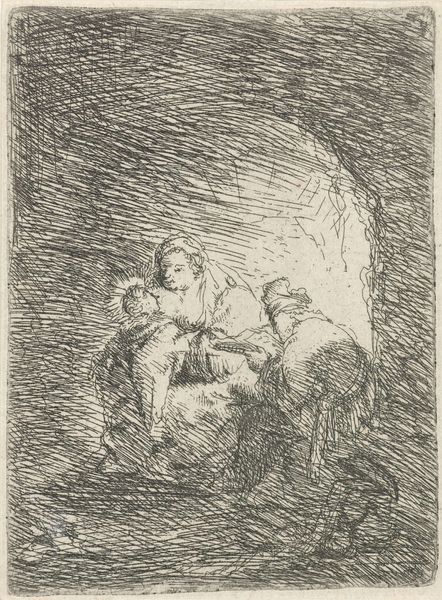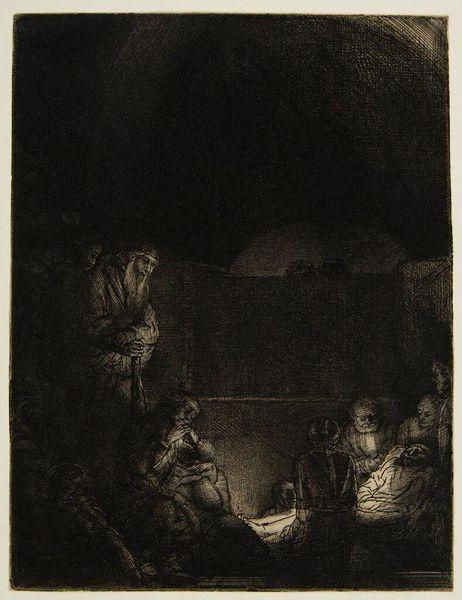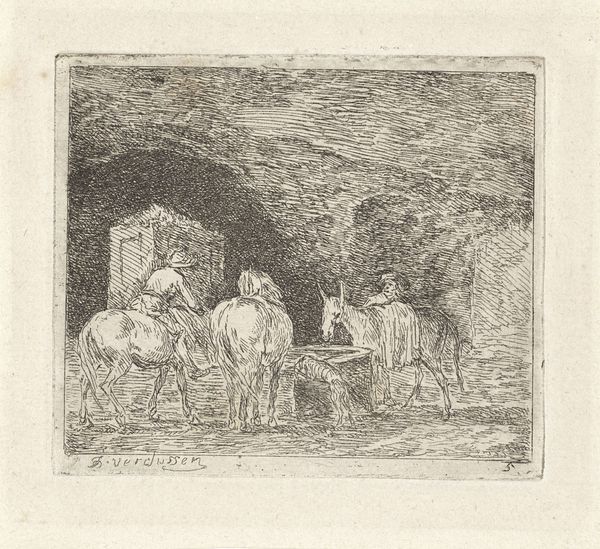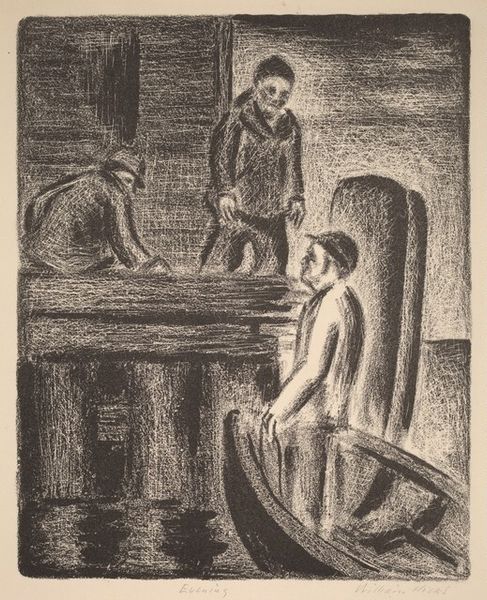
drawing, print, charcoal
#
drawing
#
narrative-art
# print
#
landscape
#
charcoal drawing
#
figuration
#
pencil drawing
#
portrait drawing
#
charcoal
Dimensions: image: 272 x 245 mm sheet: 323 x 253 mm
Copyright: National Gallery of Art: CC0 1.0
Editor: Right, next up we have "Adiós II," a charcoal and pencil drawing by Selma Cohen Bluestein, dating from around 1937 to 1938. It's incredibly moving, depicting what seems to be a group mourning the loss of someone. What strikes you most when you look at this piece? Curator: The figures are so intertwined, aren't they? I think about how Bluestein created this work during a period marked by profound social and political upheaval, right on the cusp of World War II. Knowing this, it encourages us to view the figures’ expressions of grief not only as personal, but also as an elegy for a world teetering on the brink of disaster. How does the title, "Adiós II," influence your interpretation? Editor: That’s fascinating. I hadn’t thought about the broader historical context that way. The title suggests a final farewell, amplified by the repetition of the "II," as if it's not an isolated event but a recurring tragedy. Could the landscape play a symbolic role here? Curator: Precisely. The rugged landscape, rendered in somber tones, seems to mirror the emotional desolation of the figures. The figures and the landscape seem caught in this endless loop, with the architectural ruin amplifying a sense of historical burden and potentially even, perhaps, the trauma of displacement. Does considering this work through that lens change your initial interpretation? Editor: It certainly does. Initially, I saw individual grief, but now I perceive a collective lament—a response to the turmoil of an era and a community facing imminent catastrophe. I had missed this nuance. Curator: Exactly, and that's the power of understanding art within its historical and social context. It becomes a mirror reflecting our past and present anxieties. Editor: I see it now, recognizing the art as less about personal sadness and more about historical reflection, making me eager to delve deeper into historical context of works. Curator: And hopefully prompting a deeper dialogue on the human condition, trauma, and how societies cope in the face of conflict.
Comments
No comments
Be the first to comment and join the conversation on the ultimate creative platform.
